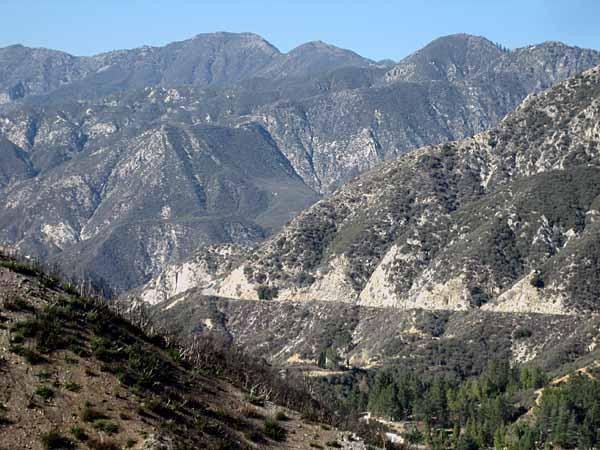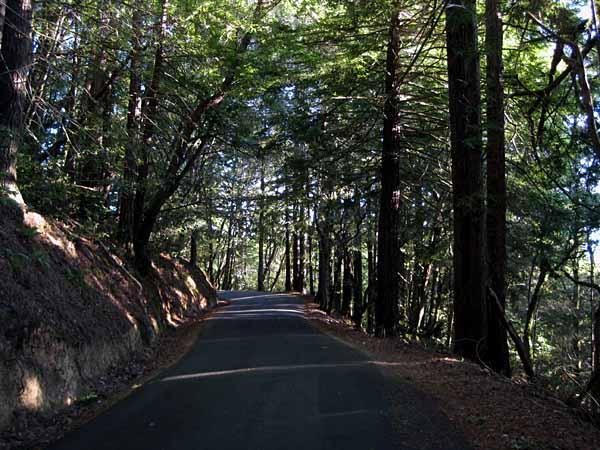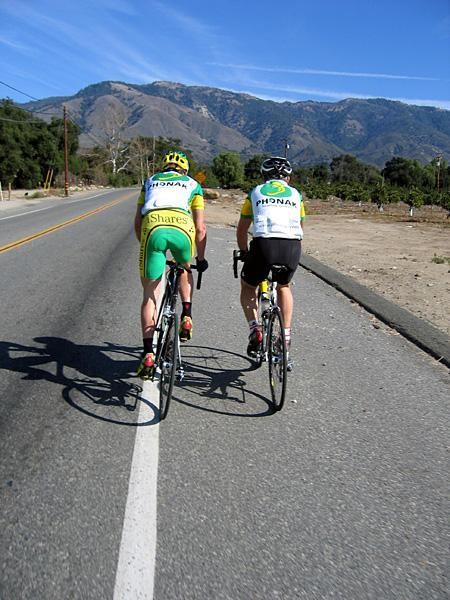Cali-climb-ication
This year's Amgen Tour of California is loaded with climbs of all shapes and sizes and except for...



Tour of California Feature, February 15, 2009
This year's Amgen Tour of California is loaded with climbs of all shapes and sizes and except for stage five from Visalia to Paso Robles and the following day's time trial, the riders will face significant uphill challenges every day.
While some ascents come a bit too early in a stage to potentially affect the outcome of the race for the overall title, there will be more than enough action from those hoping to steal a stage victory to make the climbs interesting.
Stage 1
Stage one from Davis to Santa Rosa features three notable ascents. The race reaches its first ascent at the top of Cardiac Hill just past the Monticello Dam. This 1,000 ft, two-tiered climb is moderately graded at between four to seven percent and will provide the perfect warm up for the peloton. The next test will fall on Howell Mountain Road, a two-mile 10-percent beast that could split the field if someone is feeling frisky. Everything should come back together in the Napa Valley, setting the stage for the last ascent of the day. Petrified Forest Road is steep and straight but it is also short at just over 500 ft. If you're race contender you should finish in the bunch at Santa Rosa.
Stage 2
In race's three year history there has never been a mountain-top finish, but stage two from Sausalito to Santa Cruz is close to being one. There are two significant climbs, with the first coming at Tunitas Creek Road. It's a popular test for Silicon Valley cyclists and this 6-mile, 2000 ft test has two miles of between nine and eleven percent in its mid-section, but even with that difficulty, it is too far from the finish to see a move by any of the overall favorites.
Get The Leadout Newsletter
The latest race content, interviews, features, reviews and expert buying guides, direct to your inbox!
The final climb, Bonny Doon Road is quite the opposite. It features an initial two-mile section averaging ten percent, with pitches up to 14 percent followed by four miles of four to seven percent where the contenders will definitely shed the pretenders.
Most importantly, at the top of the climb, a sharp right-turn sends the racers straight down to the finish line in Santa Cruz in a high-speed ten-mile descent. Look for a group containing all the favorites at the line in Surf City. Levi Leipheimer has called this one of the race's decisive stages and has ridden it in training, as have Dave Zabriskie and Tom Danielson.
Stage 3
This 104.2 mile effort from San Jose to Modesto contains both the grueling Sierra Road and Patterson Pass. There are sixty flat miles to the finish after the final climb so the sprinters should rule the day.
Stage 4
The peloton ride into the foothills of the Sierra Nevada mountains and face four grueling climbs. The relatively high altitude for winter, 4,000 ft and the fact that the stage stays over 2,000 ft for over 50 miles means that mother nature may play a big factor. Snow is not out of the question if the weather is bad. With the top of the final ascent coming 30 miles from the finish look for the GC riders to all roll in together. However, Ouch Medical's Tim Johnson notes that, "on paper, the climbs may look easy, but in a race with a field of this caliber, every uphill is hard."
Stage 7
Starting from Santa Clarita and finishing in Pasadena, this is a carbon copy of last year's final stage and features the long but gradual 4,000 ft ascent to the top of Mill Creek Summit. Once again over 50 miles of descending and flat riding remain to the finish so a well-organized team can definitely defend the leader's jersey. Lance Armstrong trained in this area in preparation for his 2004 and 2005 Tour de France victories when he was living part-time in Southern California with Sheryl Crow.
Stage 8
The most anticipated climb of this year's race is the massive 4,400 ft ascent of Palomar Mountain which comes on the race's concluding stage from Rancho Bernardo to Escondido. Starting in Pauma Valley, this 11-mile climb features a final seven miles of steady inclinces. Topping out at 5,200 ft, snow is frequently found on its upper slopes. Unfortunately, the summit is reached before the midpoint in the stage and will most likely not be a factor. "I am hoping that the race has been decided before this stage as I would hate to have to race over that climb," remarked Tim Johnson who has won the brutal Mount Washington Hill Climb on two separate occasions.
The final mountain of the race, Cole Grade, is a two-mile, 800 ft slog which is just short enough to hit on full gas, but just long enough that it seems to go on forever. There are still 20 miles to go to the final finish line which, on paper, make this climb difficult, but not selective to the overall standings.
Who will shine on the climbs? Certainly the likes of Levi Leipheimer and Robert Gesink have been the class of the field the past two years. Will Christian Vande Velde, Floyd Landis, the Schleck brothers, Tom Danielson and a certain Texan be fit and motivated enough to come along for the ride?